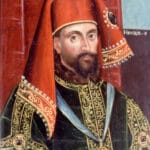Collis P. Huntington, while not as widely recognized as some of his contemporaries, was a driving force in the development of the American West. This article delves into the life and legacy of this complex figure, exploring his ambition, his achievements, and the controversies that surrounded his rise to power.
From Humble Beginnings to Railroad Tycoon
Collis Potter Huntington, born in 1821, began his life as a farm boy in Connecticut. However, the California Gold Rush ignited a spark of ambition within him. Rather than seeking gold himself, Huntington recognized the opportunity in supplying the growing westward migration. Arriving in California in 1849, he quickly established himself as a shrewd businessman, amassing a small fortune.
Huntington’s ambitions soon extended beyond supplying miners. He recognized the need for efficient transportation to connect the burgeoning West Coast with the rest of the nation. This led him to join forces with Leland Stanford, Mark Hopkins, and Charles Crocker, forming the legendary “Big Four” who would take on the daunting task of building the Central Pacific Railroad, the western portion of the first transcontinental railroad.
The Challenges and Controversies of Building an Empire
The construction of the Central Pacific Railroad was a monumental undertaking, fraught with challenges. Huntington, serving as the company’s vice president, was instrumental in securing funding and navigating the treacherous waters of politics. He lobbied tirelessly, forging alliances and leveraging his influence to gain government support and overcome legal hurdles.
One of the most significant challenges faced by Huntington and his associates was the daunting task of laying track through the Sierra Nevada mountains. To accomplish this feat, the Central Pacific employed thousands of Chinese immigrants who, despite facing harsh conditions and discrimination, played a crucial role in the railroad’s construction. Their resilience and ingenuity were essential in blasting tunnels through mountains and building bridges over treacherous ravines.
While the completion of the transcontinental railroad in 1869 marked a pivotal moment in American history, connecting East and West and facilitating trade and communication, it also cast a shadow on Huntington’s legacy. The use of Chinese labor, while essential to the project’s success, came at a cost. The workers, often subjected to dangerous conditions and exploitative practices, received meager wages and endured prejudice. This period stands as a stark reminder of the human cost often associated with grand endeavors.
Later Years and a Complex Legacy
Following the completion of the transcontinental railroad, Huntington continued to expand his empire, acquiring more railroads and solidifying his control over vast transportation networks. His influence extended to the halls of power in Washington D.C., where he lobbied for favorable legislation and faced accusations of bribery and corruption.
Despite the controversies surrounding his business practices, Huntington also engaged in philanthropy. He became a patron of the arts, amassing a remarkable collection that he later donated to the Metropolitan Museum of Art. This act of generosity, while overshadowed by his business dealings, revealed a more complex figure than the ruthless tycoon image often associated with him.
What Happened to Collis Huntington?
Collis P. Huntington died on August 13, 1900, at his Adirondack retreat, leaving behind a legacy as intricate as the railroad lines he built. His story is a testament to the ambition and innovation that characterized the Gilded Age, but it also serves as a reminder of the ethical dilemmas and social inequalities that marked this era of rapid industrialization.
Huntington’s later years were marked by a continued pursuit of expansion and consolidation within the railroad industry. He faced growing scrutiny and criticism for his business practices, with accusations of unethical dealings and exploitation continuing to dog his footsteps.
Despite the controversies, Huntington sought to shape his public image through philanthropy. His art collection, eventually donated to the Metropolitan Museum of Art, showcased a different side to the tycoon. However, the debate over whether his charitable actions could offset the accusations of ruthlessness continued to swirl around his legacy.
Who Was Collis Huntington’s Son?
Collis Huntington’s son, Archer Milton Huntington, charted a different path than his father. Born in 1870 to Collis and his second wife, Arabella, Archer developed a deep passion for Hispanic culture and literature. Instead of immersing himself in the world of railroads and finance, Archer became a renowned Hispanic scholar and philanthropist, leaving an indelible mark on the world of art and scholarship.
Archer’s life’s work focused on preserving and promoting Hispanic culture. He amassed a vast collection of books, manuscripts, and art from Spain and Latin America. In 1904, he founded The Hispanic Society of America, a testament to his dedication to sharing his passion with the world. He later established The Huntington Library, Art Museum, and Botanical Gardens in San Marino, California, a lasting legacy that continues to inspire and educate visitors to this day.
Who Was Collis Huntington Married To?
Collis Huntington was married twice. His first wife, Elizabeth Stoddard Huntington, shared his life for over four decades, witnessing his rise from modest beginnings to a position of immense power and wealth. After Elizabeth’s death in 1883, Collis married Arabella Duval Yarrington Worsham in 1884. Arabella, a woman of independent means and a passion for art, played a significant role in Collis’s later life, and her influence on his legacy, particularly in the realm of art collection and philanthropy, is undeniable.
The contrasting lives and legacies of Collis Huntington’s wives provide a glimpse into the complexities of the Gilded Age. While Elizabeth represented a more traditional role, standing by her husband’s side as he navigated the world of business, Arabella emerged as a force in her own right, actively shaping the family’s legacy through her business acumen and passion for the arts.
A Legacy of Contradictions
Collis P. Huntington’s life story is a tapestry woven with threads of ambition, innovation, and controversy. He was a man who dreamed big and stopped at nothing to achieve his goals, forever changing the face of America. He left behind a legacy that continues to spark debate, reminding us that progress often comes at a cost and that the lines between hero and villain can be blurry. His story, intertwined with the rise of modern America, prompts us to grapple with the complexities of ambition, the human cost of progress, and the enduring impact of one man’s vision.
- Unlock Water’s Symbolism: A Cross-Cultural Exploration - April 20, 2025
- Identify Black and White Snakes: Venomous or Harmless? - April 20, 2025
- Unlocking Potential: Origins High School’s NYC Story - April 20, 2025















